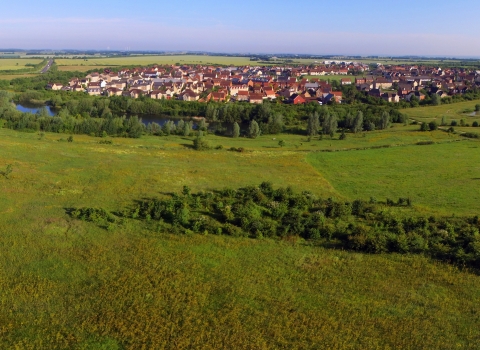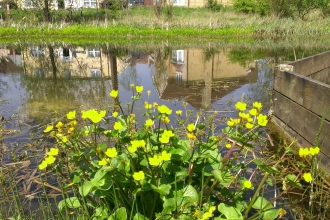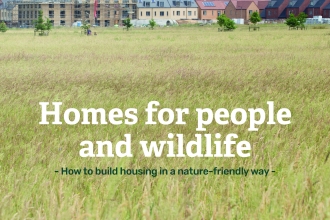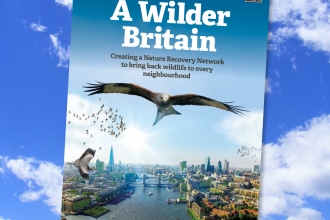Building a Nature Recovery Network to connect our wild spaces together means working with communities, new and old, to ensure that people and wildlife have access to green spaces in and around cities, towns, farmland, roads and villages as well as in the wildlife havens of our nature reserves.
Working together with developers is vital
We believe that by working with developers we can achieve more for wildlife. We hold strong principles and high standards in what we expect from developers, but know from experience that when these are met the result is more wildlife-rich land - better for wildlife and better for people.
The Wildlife Trust BCN recognises the demand for new homes, commercial development and associated infrastructure, from a population that is growing and changing in both distribution in character. The Trust believes that well planned development that considers wildlife and nature at the earliest stages has the potential to not only enhances green spaces for nature to thrive, but also to contribute to the health and well-being of people who live and work there.
Our policy is to consider every development proposal on its merits, and the Wildlife Trust BCN offers ecological advice, support and management of green spaces to developers.
We have worked with partners including Prologis, The Crown Estate, Grosvenor and MCA Developments (Taylor Wimpey, Bovis Homes) on projects across our three counties, ensuring high quality, sustainable development that is good for wildlife and people.
Local Examples
We have a proven track record of working with developers to ensure new homes and communities are built in a way that enhances the natural environment and increases the area’s biodiversity.
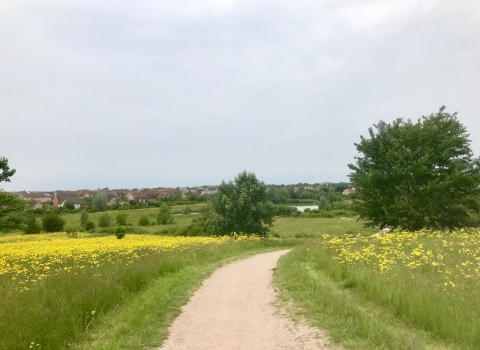
Cambourne
Cambourne regularly features in national planning guidance as an example of good planning designed around a natural environment.
The village itself, comprising nearly 5,000 houses, a business park and five schools, is built upon old arable farmland. We were involved early on with this new development by MCA Developments, helping to develop a 'green infrastructure' which identified and retained natural features such as woodlands, hedges and ponds as well as places for the creation of new habitats. We continue to manage 90 hectares of woodland, grassland, ponds and orchards in the village.
It is now richer in wildlife than the surrounding land and many new species have colonised.
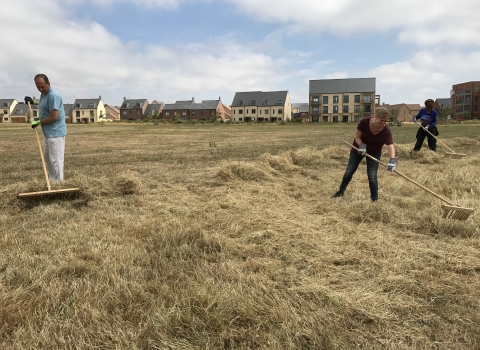
Hay cut Trumpington Meadows
Trumpington Meadows
Trumpington Meadows is a 1,200 home development on the edge of Cambridge, and the Wildlife Trust BCN was selected as the preferred green space partner.
We manage a 58-hectare nature reserve near to the development, and offered specialist ecological advice on the scheme design as well as helping to manage land during construction. Our involvement ensure that new meadows, hedges, woods and ponds were created for this new community to enjoy.
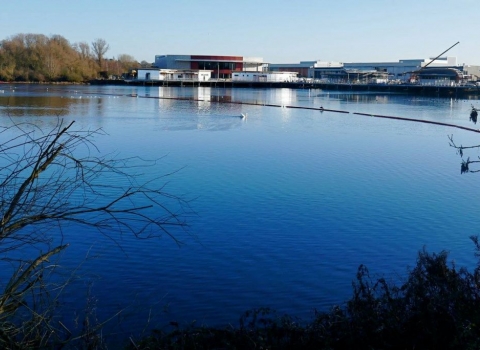
Photo by Caroline Fitton
Nene Wetlands and Rushden Lakes
Rushden Lakes retail and leisure centre, owned by The Crown Estate, now attracts over 5 million visitors a year. As the chosen partner, we have advised on the ecological design from the very start of the planning process right through to the implementation on the ground.
Our involvement has not only ensured a net-positive impact on the wildlife in this special location next to the Upper Nene Valley Special Proctection Area and Site of Special Scientific Interest, but also cemented Rushden Lakes' reputation as the ultimate destination for both leisure and retail.
With our Visitor Centre located on site, we also help to make wild green spaces more accessible for the community with events, school visits, guided walks and more.
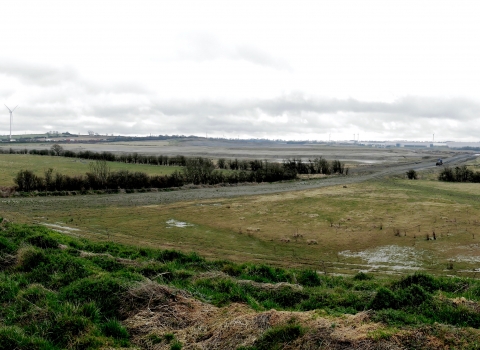
Lilbourne panorama by Caroline Fitton
Lilbourne Meadows - logistics terminal expansion
Leading developer Prologis chose the Wildlife Trust BCN to design and manage their 79-hectare nature reserve developed as an ecological mitigation area for the development of the new Daventry International Rail Freight Terminal (DIRFT).
Working closely with their ecologists and specialists at Natural England and the Environment Agency, we planned the different types of habitat needed to bring long-term benefits to wildlife, and to suit the protected and notable species that have been identified there, including curlews and great crested newts.
The enhanced biodiversity of the area will bring lasting benefit to the local community.

